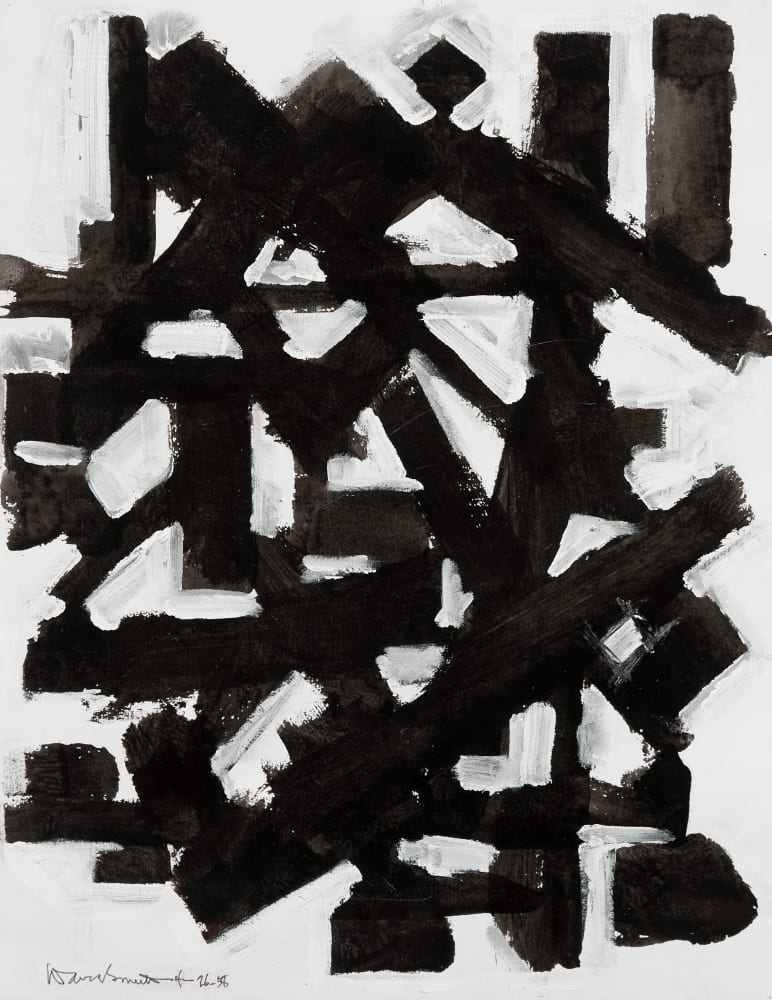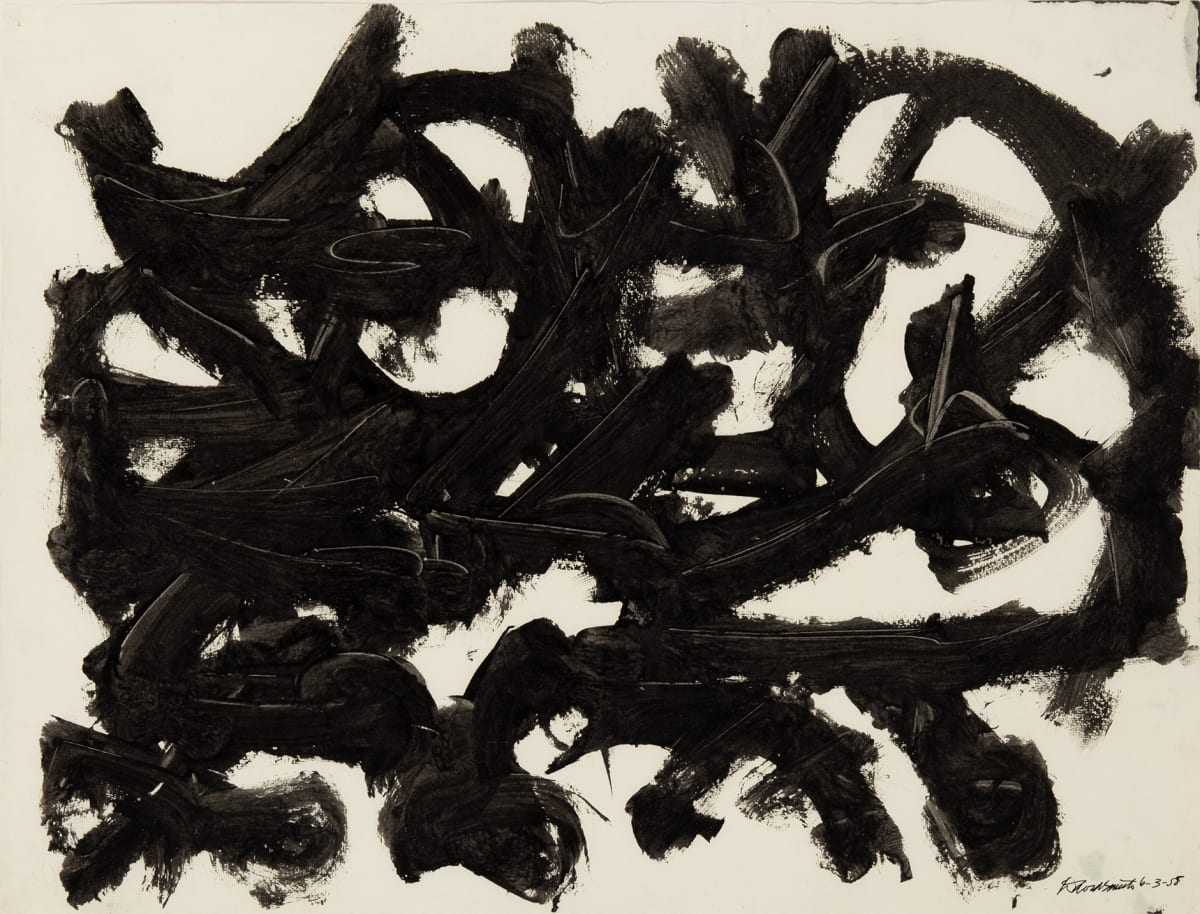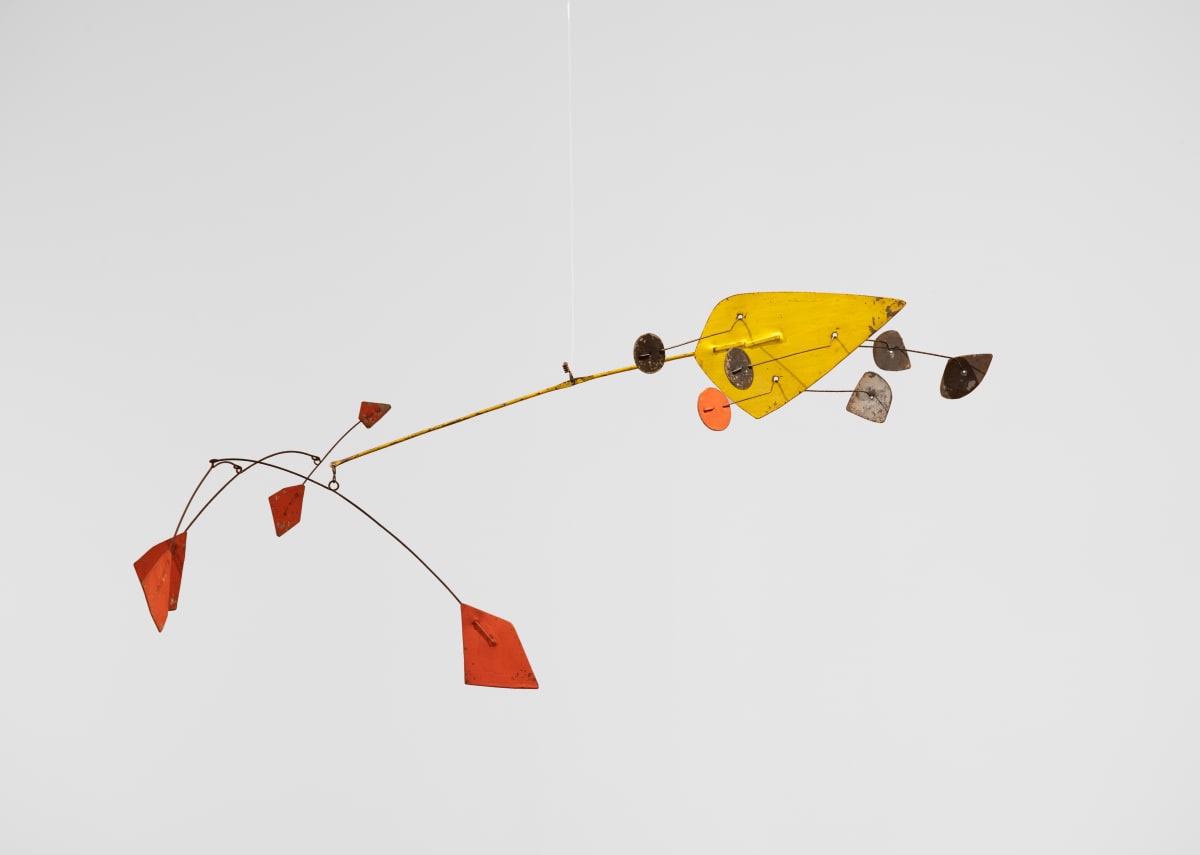
Scholars consider him to be the foremost American sculptor of his generation
David Smith was an American sculptor, painter, and draughtsman. Scholars consider him to be the foremost American sculptor of his generation, a pioneer of welded constructions in the United States when the practice was still only in its infancy in Europe. Smith was born in Indiana in 1906, and began his artistic education at the Arts Students League in 1926, where he studied under both the Ashcan painter John Sloan and the cubist painter Jan Matulka. During his time in New York, both as a student at ASL and as a participant in the Works Progress Administration’s Federal Art Project, Smith developed friendships with many artists, including his future wife Dorothy Dehner, Willem and Elaine de Kooning, Stuart Davis, Milton Avery, Arshile Gorky, and perhaps most importantly for his artistic development, John Graham. Graham introduced Smith to the latest trends in European art, as well as African sculpture, both of which were to become major influences in Smith’s later work.
David Smith was an American sculptor, painter, and draughtsman. Scholars consider him to be the foremost American sculptor of his generation, a pioneer of welded constructions in the United States when the practice was still only in its infancy in Europe. Smith was born in Indiana in 1906, and began his artistic education at the Arts Students League in 1926, where he studied under both the Ashcan painter John Sloan and the cubist painter Jan Matulka. During his time in New York, both as a student at ASL and as a participant in the Works Progress Administration’s Federal Art Project, Smith developed friendships with many artists, including his future wife Dorothy Dehner, Willem and Elaine de Kooning, Stuart Davis, Milton Avery, Arshile Gorky, and perhaps most importantly for his artistic development, John Graham. Graham introduced Smith to the latest trends in European art, as well as African sculpture, both of which were to become major influences in Smith’s later work.
Smith, along with Graham and Dehner, made his first trip to Europe in 1935, where he viewed the work of the European avant-garde first hand. When he returned to the United States, he joined the newly-formed American Abstract Artists, with whom he showed in 1938 and 1939. Smith had his first solo show at Marian Willard’s East River Gallery in New York City in 1938, which featured his welded iron sculptures and his drawings from 1935 to 1938. Smith then exhibited his welded sculptures in the group show American Art Today at the 1939-40 New York World’s Fair.
Smith made his first welded construction in 1933, and increasingly devoted his energy to sculpture as the decade progressed. He established a studio at a welding workshop in Brooklyn, Terminal Iron Works, and then another when he moved upstate to Bolton Landing in 1940. Most of his earlier works were on a relatively small scale – relief plaques, aluminum and bronze castings, many of which incorporated found objects. These constructions, in conjunction with his paintings and drawings, allowed Smith to explore a wide range of formal approaches, from figuration to geometric abstraction. By the early 1940s, Smith began to receive much critical attention, including from the influential Clement Greenberg, who wrote in The Nation “If [Smith] is able to maintain the level set in the work he has already done, he has a chance of becoming the greatest of all American artists.”
Smith was awarded a Guggenheim grant in 1950, which was renewed in 1951. This grant gave him the financial freedom to both quit his non-art related jobs and to purchase materials that allowed him to create sculptures on a larger scale. Smith placed these larger sculptures in the fields around his house in Bolton Landing a few years after, and in 1958, he began to paint them bright colors (which Greenberg controversially removed when he took over Smith’s estate).
In February 1965, Lyndon B. Johnson appointed Smith to serve on the National Council on the Arts. In May of that year, Smith was killed in a car accident in Bennington, Vermont at the age of 59. Smith’s work has influenced many artists, both his peers and later generations. For example, the British sculptor Anthony Caro began to work with steel after seeing Smith’s sculptures during a trip to the United States in 1959. He continues to be of great interest to both scholars and the public alike, as evidenced by the recent show David Smith: Cubes and Anarchy, organized by the Los Angeles County Museum of Art (April 3 – July 24, 2011), which then travelled to the Whitney Museum of American Art (Oct 6, 2011 – Jan 8, 2012).











